(19946 products available)







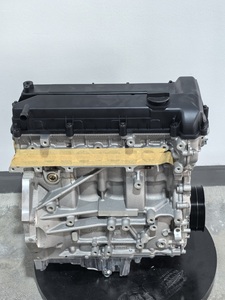
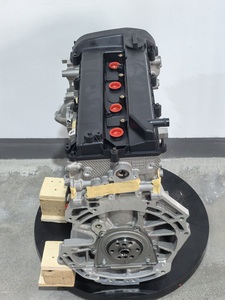
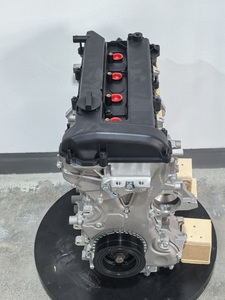
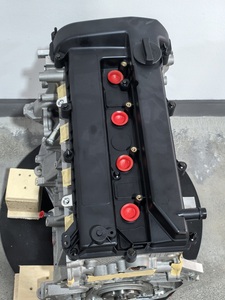
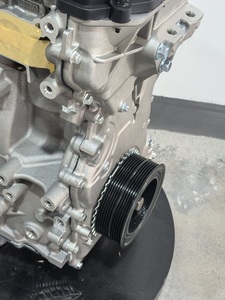





























































































































































































A 1.8L engine refers to the total engine displacement, which is approximately 110 cubic inches. This engine is used in most cars today because it strikes a good balance between power and fuel efficiency. The 1.8L engine has two main types:
Gasoline 1.8L engine:
The gasoline 1.8L engines draw in air and mix it with gasoline. The mixture is then compressed and ignited by spark plugs. These engines tend to be more powerful than their diesel counterparts. They have better performance and acceleration. As a result, the fuel consumption in gasoline 1.8L engines is a bit higher. They are mostly used in small and midsize cars. The maintenance costs for gasoline 1.8L engines are relatively low.
Diesel 1.8L engine:
The diesel 1.8L engines draw in air and compress it before injecting diesel into the cylinders. The high temperature resulting from the compression ignites the diesel fuel. This process makes diesel engines slower and gives them better torque. As a result, the acceleration is not as good compared to gasoline engines. Despite the low power output, the diesel 1.8L engines have better fuel efficiency and are suitable for long-distance travel. They also produce less CO2 than gasoline engines, making them more environmentally friendly. The maintenance costs for diesel 1.8L engines are higher due to the added complexity.
Other 1.8L engine variations include the turbocharged and the dual-fuel 1.8L engine. The 1.8L turbocharged engine uses turbines to compress more air into the cylinders. This results in more power and efficiency from the same amount of fuel. The dual-fuel 1.8L engine can use two types of fuel, such as gasoline and electricity or gasoline and hydrogen. This allows for greater flexibility and potential for cleaner energy use. The 1.8L engine is commonly paired with the 5-speed manual transmission system.
Engine Configuration
1.8l engines have four cylinders arranged in a line. This layout allows the engines to run smoothly and use fuel effectively.
Fuel Type
The 1.8-litre engines typically use gasoline or petrol as fuel. Gasoline is a common fuel that many cars use.
Horsepower
1.8L engines generate between 120 and 180 horsepower. Horsepower is a measure of how much power the engine makes. More power means the car can go faster or pull heavier loads.
Torque
The engines produce 110 to 170 lb-ft of torque. Torque measures the force that is applied to turn the wheels. Like horsepower, more torque allows the car to accelerate more quickly or carry more weight.
Fuel Efficiency
The 1.8l engines are designed to use fuel efficiently. The car gets 25 to 35 miles per gallon (mpg) on the highway and 20 to 30 mpg in the city. This means the vehicle can travel a long distance on a single tank of fuel.
Emissions Rating
1.8L engines have an emissions rating that measures how much pollution the car releases. Lower emissions ratings mean the engine is better for the environment. These engines are rated as Tier 2, Bin 5 or LEV II ULEV.
Features for Smooth Driving
The engines have features that help the car run well. They include: Variable Valve Timing - This allows the engine to use fuel more efficiently at different speeds. Turbocharging - This gives the engine more power without making it bigger. Direct Fuel Injection - This sends fuel directly into the cylinders for better burning.
1.8L engine maintenance is important to keep the engine running well over time. Here are some tips:
Regular Oil Changes
Cars with 1.8L engines should get oil changes every 5,000 to 7,500 miles. Clean oil helps all the moving parts slide easily and prevents wear and tear.
Air Filter Replacement
The air filter should be changed every 30,000 to 50,000 miles or whenever it looks dirty. A clean air filter lets enough air into the engine for power and fuel efficiency.
Spark Plug Inspection
Drivers should check the spark plugs around 30,000 miles. The plugs should be clean and in good shape to ignite the fuel properly.
Tire Rotation
Tires should be rotated every 6,000 to 8,000 miles. This helps the tires wear evenly so they last longer.
Cooling System Flush
The coolant system should be flushed and refilled every 30,000 to 50,000 miles. Fresh coolant stops the engine from overheating.
Timing Belt Inspection
The timing belt should be checked at 60,000 miles or sooner if needed. A worn belt can cause major engine problems.
Before purchasing an 1.8L engine, it's necessary to consider these factors to ensure the needs are met.
Purpose
Consider the main use of the vehicle. For instance, if the vehicle is primarily used for commuting, a 1.8L engine is a suitable option. However, if the vehicle is used for towing and hauling, a larger engine would be a better option.
Fuel Efficiency
In general, 1.8L engines provide good fuel efficiency compared to larger engines. However, other factors such as driving habits and vehicle maintenance affect the fuel efficiency of the engine.
Power Requirements
Consider the power requirements of the engine. A turbocharged 1.8L engine produces more power than a naturally aspirated engine.
Emissions Regulations
Check the emissions regulations required in the area. Some regions have strict emissions regulations that require vehicles to comply with certain emissions standards.
Cost
Generally, the cost of purchasing and maintaining a 1.8L engine is affordable. However, the cost may vary depending on the model and make of the engine.
In order to DIY and replace 1.8 L engines, the following steps should be followed
Safety Precautions:
Car owners should ensure they have read the repair manual provided by the manufacturer. This is because it provides important information about the engine's operation and specific details that will guide them during replacement. They should also wear safety gear such as gloves and safety glasses to protect themselves from injuries and use the jack stands to prevent the vehicle from falling.
Gather Necessary Tools and Parts:
Car owners should ensure they have all the necessary tools for engine replacement. These tools include wrenches, sockets, ratchets, an engine hoist, and other specialized tools. They should also acquire a new 1.8 L engine that is compatible with the vehicle and any other necessary components such as gaskets and seals.
Disconnecting the Battery:
To prevent electrical accidents, car owners should ensure they have disconnected the battery before starting the process of replacing the engine.
Drain Fluids:
All fluids connected to the engine should be drained. This includes the engine oil and coolant. Car owners should ensure they have collected these fluids and disposed of them as per the local regulations to prevent environmental pollution.
Remove the Old Engine:
After disconnecting all the engine's connections, including the electrical systems, exhaust, intake, fuel lines, and cooling systems, they should start loosening the bolts that hold the engine to the engine bay and use the hoist to lift the engine out of the vehicle.
Preparing the New Engine:
Before installing, they should ensure that the new engine is prepared by installing any necessary components such as the intake manifold, exhaust manifold, and timing belt or chain, and ensuring the new engine is aligned with the engine mounts in the vehicle.
Connecting Systems:
Once the new engine is properly installed, they should connect all disconnected systems. This includes electrical connections, cooling systems, fuel lines, and exhaust systems. They should ensure there are no leaks or loose connections.
Refill Fluids:
Car owners should refill the new engine with the appropriate fluids. This includes engine oil and coolant. They should ensure they follow the manufacturer's specifications for fluid types and capacities.
Start and Test:
They should start the engine and let it run for a few minutes. This allows them to check for any unusual noises or vibrations. After that, they should take a test drive to ensure everything is functioning correctly.
Q1: Is a 1.8L engine good?
A1: Whether an 1.8L engine is good or not depends on the context. Generally, it is suited for small cars or those that are not very heavy. The engine can perform adequately, offering decent acceleration and enough power to maintain highway speeds. Also, it has good fuel efficiency. However, for larger vehicles or those carrying heavy loads, the 1.8L engine may struggle. In such cases, a more powerful engine would be required to meet performance needs.
Q2: What is the meaning of the 1.8L engine?
A2: The 1.8L engine means that the engine's displacement is 1.8 liters, which is equivalent to 1,800 cubic centimeters. This indicates the size of the engine and how much air-fuel mixture it can draw in and use for power generation.
Q3: Is the 1.8L engine a 4-cylinder?
A3: Many 1.8L engines are 4-cylinder engines. For example, a 1.8L engine with a V6 or V8 configuration would be less common because those designs are typically associated with larger displacements. However, it is not impossible to have a 1.8L V6 or V8 engine; it just would not be a standard configuration.
Q4: What cars have 1.8L engines?
A4: Numerous vehicles utilize the 1.8L engine across various manufacturers and car models. Typically, these cars are compact or midsize sedans, hatchbacks, and crossover SUVs. For instance, well-known car brands like Toyota, Honda, Ford, and GM have models that are equipped with 1.8L engines. To get a more specific answer, one can check the manufacturer's website or consult the dealer.